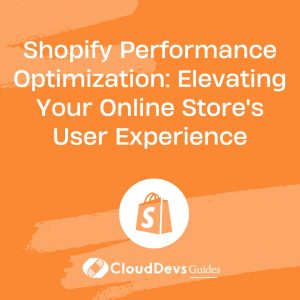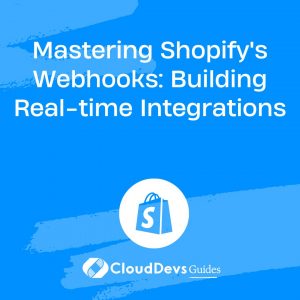Shopify Performance Optimization: Elevating Your Online Store’s User Experience
Developing a Shopify store that provides a smooth shopping experience and efficient performance is crucial for the success of any eCommerce business. This remains true whether you’re a seasoned developer handling the project yourself, or a business owner looking to hire Shopify developers. It’s the developer’s responsibility to ensure the Shopify store is not only visually appealing but also optimized for maximum performance.
In this blog post, we’ll explore some best practices that can help you boost the performance of your Shopify store. These practices are valuable whether you’re doing the development work yourself or planning to hire Shopify developers. We’ll provide tangible examples that you can implement right away. Let’s dive in.
1. Theme Optimization
Your Shopify theme is the foundation of your store’s appearance. A poorly optimized theme can slow down your site, negatively impacting user experience and SEO rankings.
1.1 Use a well-optimized theme:
Before selecting a theme, research its reviews, and look at other stores using the same theme. Shopify’s theme store is a reliable source since they vet each theme for performance and other standards. Themes like “Minimal” or “Narrative” are known for their optimization.
1.2 Minimize the use of heavy files:
Use optimized images and compress them without losing their quality. Tools such as TinyJPG or Shopify’s online image resizer can be very handy. Also, use CSS and JS minification. Tools like CSSNano and UglifyJS can help to reduce the file size.
2. Apps Management
While apps can provide your Shopify store with additional functionality, they can also be a significant source of slow-downs if not managed correctly.
2.1 Install only necessary apps:
Every app you add injects additional JavaScript into your store, which can slow things down. Make sure every app you install provides value that justifies its potential impact on performance.
2.2 Regularly review and uninstall unused apps:
Often, Shopify store owners install apps for a specific purpose and forget to uninstall them later. Regularly auditing your apps and uninstalling ones that aren’t in use will help to maintain optimal performance.
3. SEO Optimization
Performance plays a significant role in SEO, and optimizing your Shopify store can improve your visibility on search engines.
3.1 Use descriptive, keyword-rich meta tags:
Every page on your Shopify store should have unique meta titles and descriptions that include relevant keywords. This not only improves SEO but also enhances the user experience.
3.2 Ensure your site is mobile-friendly:
Google gives preference to mobile-friendly websites. Shopify themes are generally mobile responsive, but it’s always worth checking and optimizing as necessary.
4. Server Response Time
Shopify hosts all stores on its servers, ensuring a robust infrastructure. However, there are ways you can improve server response time.
4.1 Use a Content Delivery Network (CDN):
Shopify uses a CDN named Fastly, which caches your site content in multiple locations around the globe, reducing the distance between the server and user.
4.2 Reduce redirects:
Redirects create additional HTTP requests, which can increase server response time. Try to keep them to a minimum.
5. Coding Best Practices
Following coding best practices can greatly enhance the performance of your Shopify store.
5.1 Use Liquid wisely:
Liquid is Shopify’s templating language. Be cautious about using too many Liquid loops (`for` loops, `cycle` loops, etc.), as they can slow down your site.
5.2 Leverage lazy loading:
With lazy loading, images or objects load only when they come into the browser’s viewpoint. This can significantly improve load times, especially for stores with many images.
6. Checkout Experience
The checkout experience is crucial, as a slow checkout can lead to abandoned carts and lost sales.
6.1 Limit checkout design modifications:
Try to avoid unnecessary modifications to your checkout design. Shopify has spent years optimizing its checkout process, and unnecessary tweaks can often result in slowdowns.
6.2 Enable accelerated checkouts:
Shopify offers accelerated checkouts (like Shop Pay) that save shipping and payment information for returning customers, leading to a faster checkout process.
7. Page Speed Optimization
Page loading speed is an important factor that can make or break your customer’s shopping experience. Slow loading speeds can increase bounce rates and negatively affect your SEO.
7.1 Use asynchronous loading:
Asynchronous loading allows multiple scripts to load simultaneously, rather than one after another. This can speed up your overall load time.
7.2 Optimize fonts:
Having multiple fonts and weights can slow down your site. Stick with one or two font families and limit the number of weights you use. Tools like Google’s Web Font Loader can help manage the loading of your fonts.
8. Product and Collection Pages
The way you set up and manage your product and collection pages can greatly affect the performance of your Shopify store.
8.1 Limit the number of products per page:
While it may be tempting to show as many products as possible on a single page, this can significantly slow down load times. A good rule of thumb is to show between 20-30 products per page.
8.2 Use product and collection filtering:
Product and collection filters help customers quickly find what they’re looking for, enhancing user experience and boosting conversions.
9. Testing and Monitoring
Regular testing and monitoring of your site’s performance is crucial to maintain optimal operation and quickly address any issues.
9.1 Regular performance testing:
Regularly testing your site using tools like Google’s Lighthouse or PageSpeed Insights can help you identify areas for improvement and ensure your site is running as efficiently as possible.
9.2 Monitor with Google Analytics:
Google Analytics provides valuable insight into how visitors interact with your site, helping you identify any bottlenecks or areas where users may be having problems.
10. Customer Support and Service
Finally, even with the best optimization practices in place, you’ll still occasionally have customers who encounter problems. Your approach to customer service can have a big impact on your store’s performance.
10.1 Live Chat Support:
Offering a live chat option can help resolve customer queries more quickly and improve overall customer satisfaction.
10.2 Detailed FAQ section:
A well-crafted FAQ section can help customers troubleshoot common issues on their own, reducing the burden on your support team and improving user experience.
Conclusion
Shopify is a powerful eCommerce platform, but like any platform, its performance largely depends on how well it’s managed and developed. Whether you are managing the development yourself or you decide to hire Shopify developers, following these best practices will ensure that your Shopify store offers a top-notch user experience and operates at optimal performance, thereby maximizing your chances of eCommerce success.
Table of Contents









